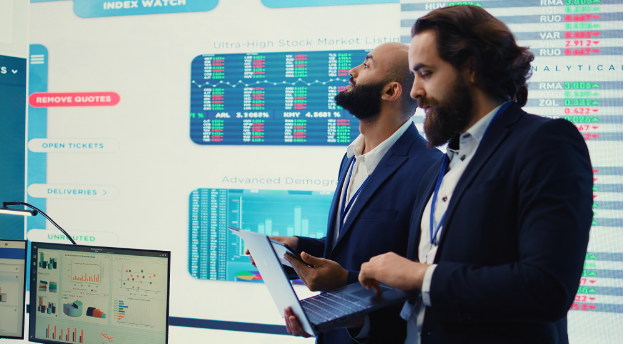Long-term profit in the market requires good timing, rigid discipline and the skill to assess risks. Both market sentiment and technical factors can lead to good trade opportunities, but it is risk management that matters most for keeping profits over time. Traders who keep their positions for several days or weeks must be able to analyze their risks and plan when to get out. With TradingView Charts, traders get tools to help them understand, measure and manage their risks on each trade.
Dutch swing traders often need to deal with problems from high market volatility and sudden price gaps due to European or world economic events. Because price changes in the market may result from earnings statements, official statements by politicians or central bank news, reacting to the news is sometimes insufficient. Strategies used by traders should take into account support and resistance, the average true range (ATR) and historical volatility. It becomes much easier when you can use images. If a chart is clearly set up, the risk areas can clearly be identified with colors, stop-loss prices can be adjusted up or down with a click and the target price can be changed immediately as the market changes.
Dealing with psychological factors is crucial in risk management, the same as dealing with numbers. A position size and stop limit may be understood in words, but seeing them on the chart makes it easier to stick to the plan. Users can draw risk-reward boxes directly on TradingView charts and refer to them when checking if a trade is acceptable. By checking the chart, Dutch swing traders can identify and pass on unfavorable setups when trading. It shows that sticking to a plan and trading only when it works makes it more likely you will win.
Even though the Dutch market is fairly stable in many ways, it is affected by trends across the European Union and globally. News events that happen after regular trading can cause stocks to go up or down sharply. Dealing with this risk, traders can set up price alerts, draw trend lines and use time-based tools to prepare for upcoming changes in prices. By supporting trailing stops and scaled exits, the charting tools back up gains when the market moves your way and protect you if the market shifts.
Desktop platforms often give users the chance to check and review their earlier trades. A person in risk management thinks about the future and learns from the past. Looking through visual trade journals that store chart snapshots lets traders check if they stuck to their risk management plans. If Dutch swing traders check their progress regularly using charts, they can sharpen their approach more quickly and clearly.
As well as examining single trades, portfolios can be assessed for risk on a single screen. By comparing several assets or by watching correlation indicators, traders keep themselves safe from overexposing a specific sector. Having this awareness means you’re less likely to be surprised by a major market shift.
Besides analyzing price, using TradingView charts supports the building of good trading routines. For Dutch swing traders, the platform provides the structure and understanding to handle risks both from local and international markets more confidently.

